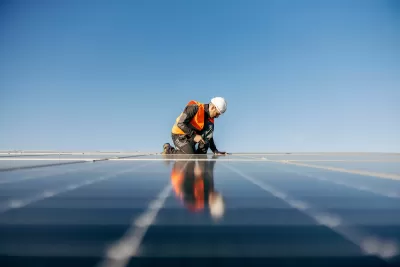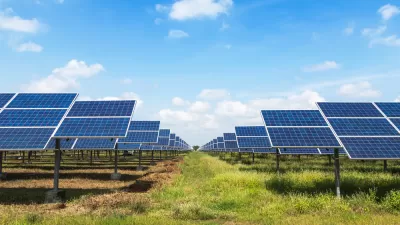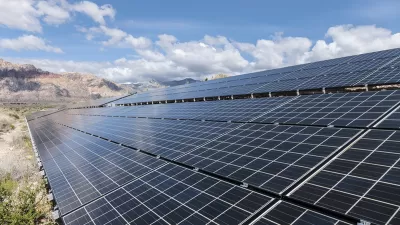The sixth-largest self-storage company in the United States will add solar panels to 8.5 million square feet of its facilities’ rooftops to produce community solar power.

Self-storage powerhouse National Storage Affiliates Trust, in partnership with community solar developer Solar Landscape, is set to add solar panels to 8.5 million square feet of its rooftop space, according to an article from Electrek. “That’s enough solar panels to cover roughly 1,000 of NSA’s self-storage properties scattered across 42 states and Puerto Rico,” and is equal to 100 megawatts of solar capacity to power not just NSA facilities but also nearby homes and businesses. And thanks to the community solar model, the energy will be discounted, reports Michelle Lewis. “This setup means energy gets produced right where it’s needed, reducing strain on the grid and cutting down on energy costs for locals.”
As part of the partnership, NSA will lease Solar Landscape its rooftop space, while Solar Landscape will develop, own, and operate the solar systems. According to the article, the first sites are already under development. In another Electrek article from last year, Lewis reported that industrial rooftops are prime candidates for solar panel space; the U.S. has more than 450,000 warehouses and distribution centers offering up more than 16.4 billion of roof area. “[T]he rooftops of US warehouses built before 2019 alone have the potential to generate 185.6 terawatt-hours (TWh) of solar electricity annually – enough to power 19.4 million average households. That’s equivalent to roughly the entire New York-Newark-Jersey City metropolitan area,” according to the 2023 article.
Given concerns about solar farms taking valuable farmland out of production, turning to large-footprint industrial rooftops to host panels could certainly be a promising alternative.
FULL STORY: 8.5M square feet of US self-storage rooftops are getting solar

Maui's Vacation Rental Debate Turns Ugly
Verbal attacks, misinformation campaigns and fistfights plague a high-stakes debate to convert thousands of vacation rentals into long-term housing.

Planetizen Federal Action Tracker
A weekly monitor of how Trump’s orders and actions are impacting planners and planning in America.

In Urban Planning, AI Prompting Could be the New Design Thinking
Creativity has long been key to great urban design. What if we see AI as our new creative partner?

King County Supportive Housing Program Offers Hope for Unhoused Residents
The county is taking a ‘Housing First’ approach that prioritizes getting people into housing, then offering wraparound supportive services.

Researchers Use AI to Get Clearer Picture of US Housing
Analysts are using artificial intelligence to supercharge their research by allowing them to comb through data faster. Though these AI tools can be error prone, they save time and housing researchers are optimistic about the future.

Making Shared Micromobility More Inclusive
Cities and shared mobility system operators can do more to include people with disabilities in planning and operations, per a new report.
Urban Design for Planners 1: Software Tools
This six-course series explores essential urban design concepts using open source software and equips planners with the tools they need to participate fully in the urban design process.
Planning for Universal Design
Learn the tools for implementing Universal Design in planning regulations.
planning NEXT
Appalachian Highlands Housing Partners
Mpact (founded as Rail~Volution)
City of Camden Redevelopment Agency
City of Astoria
City of Portland
City of Laramie





























